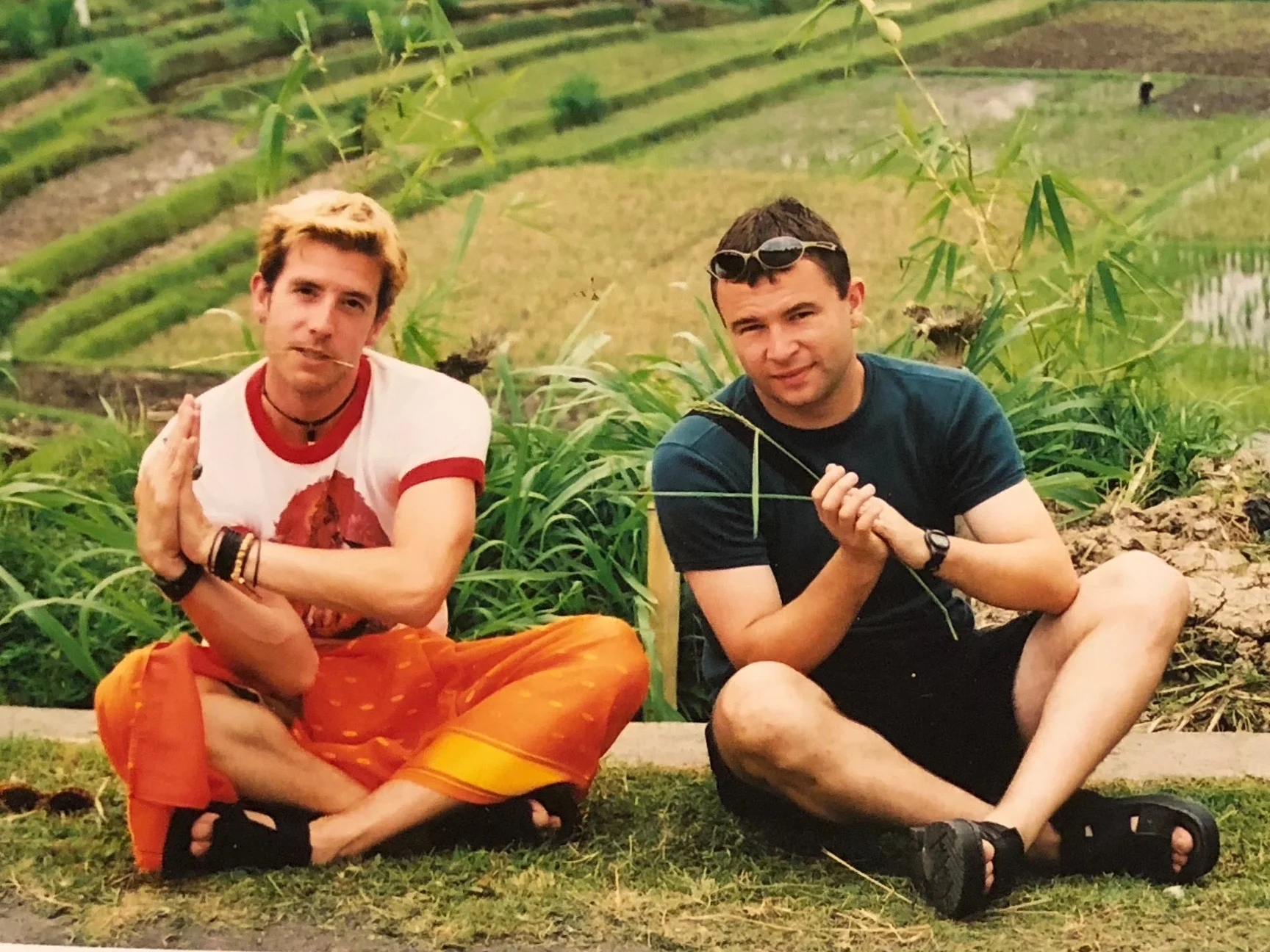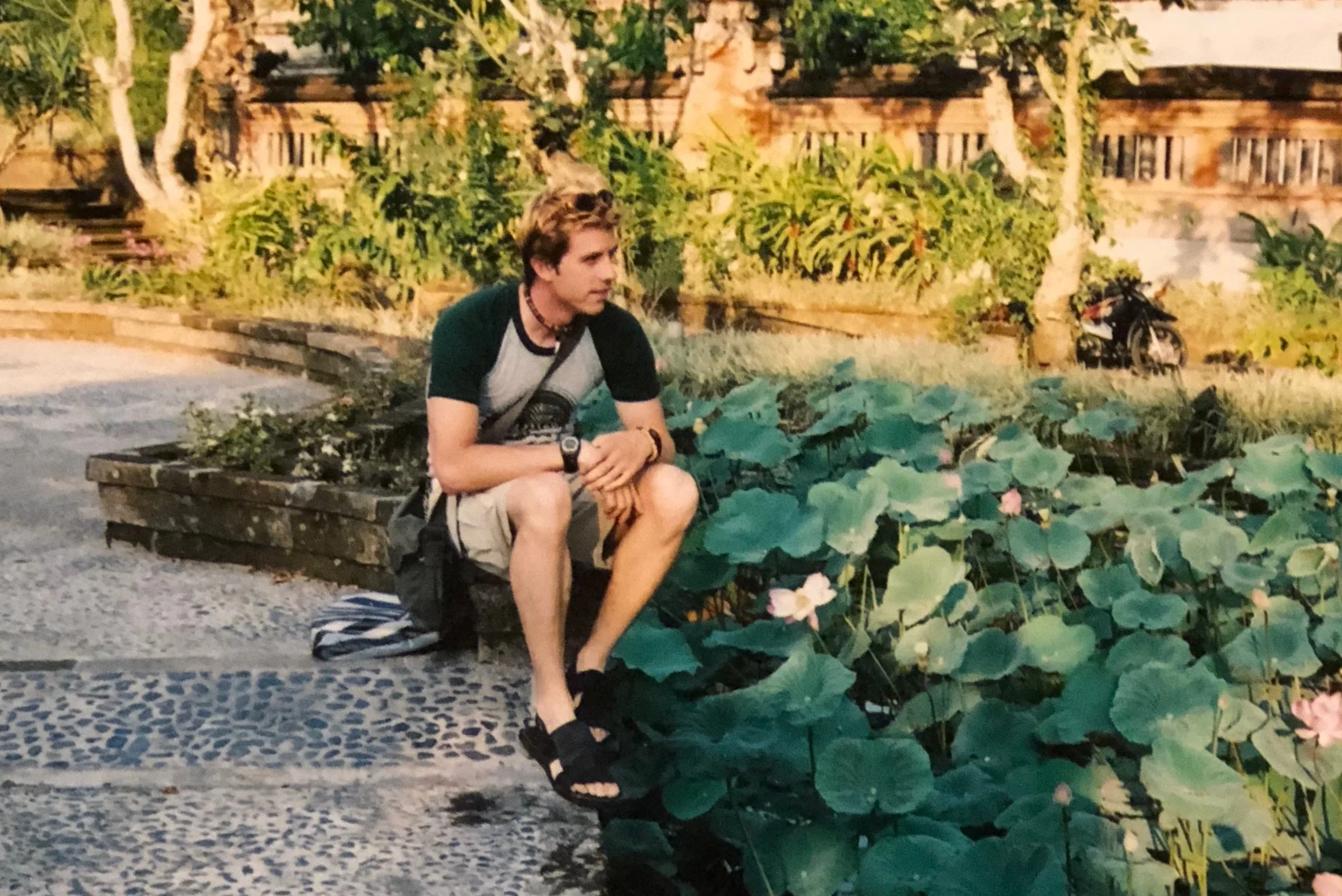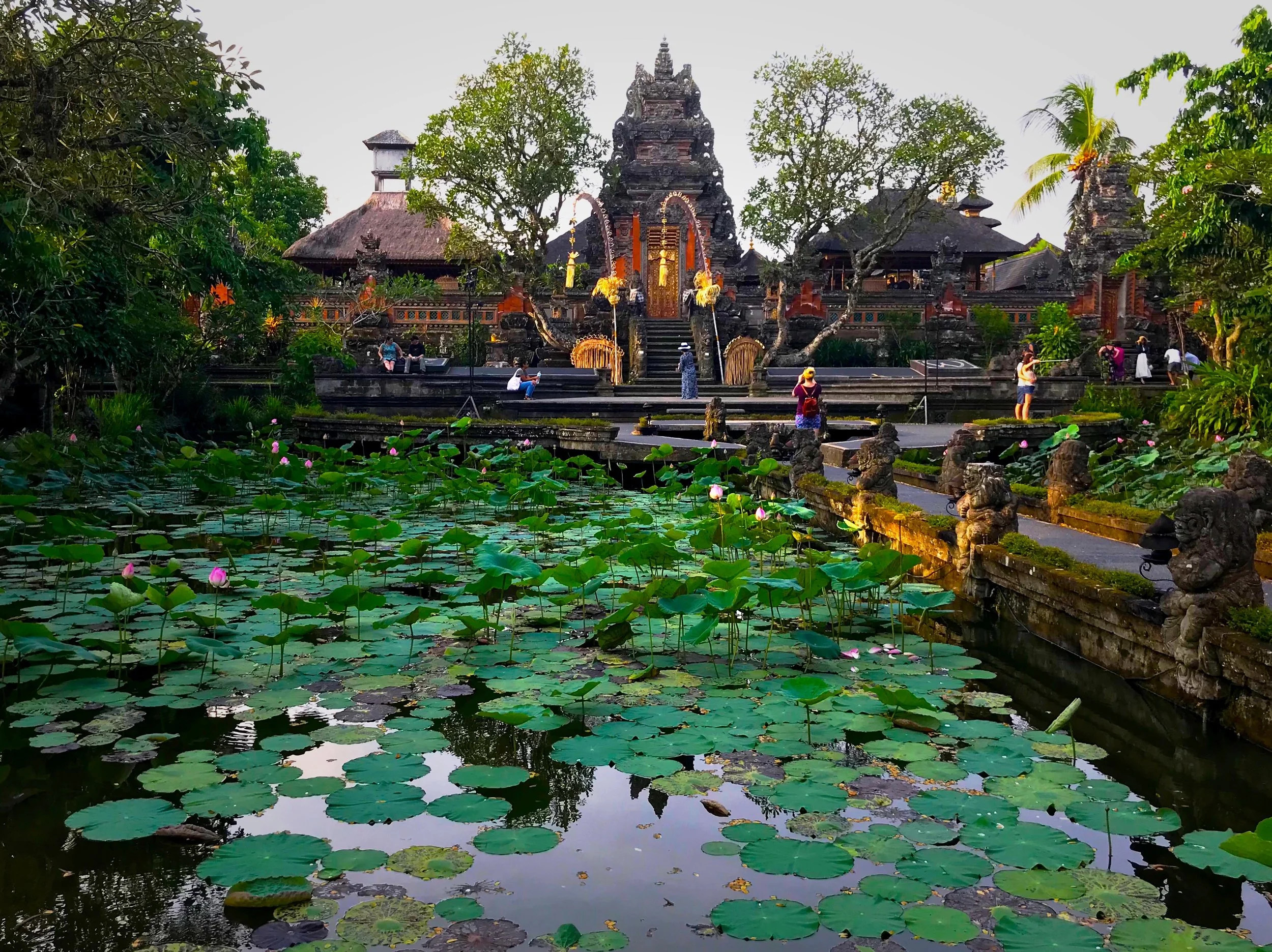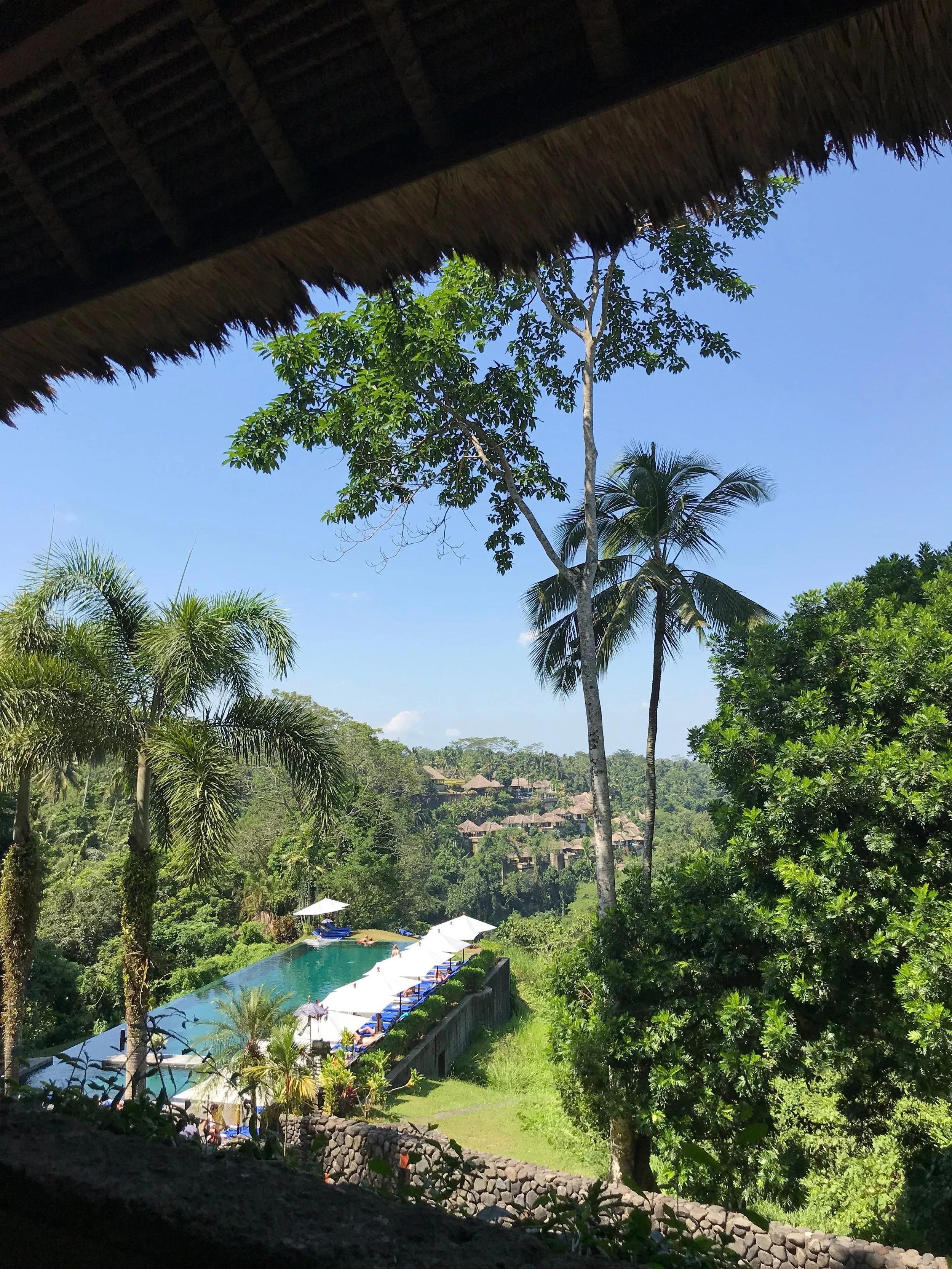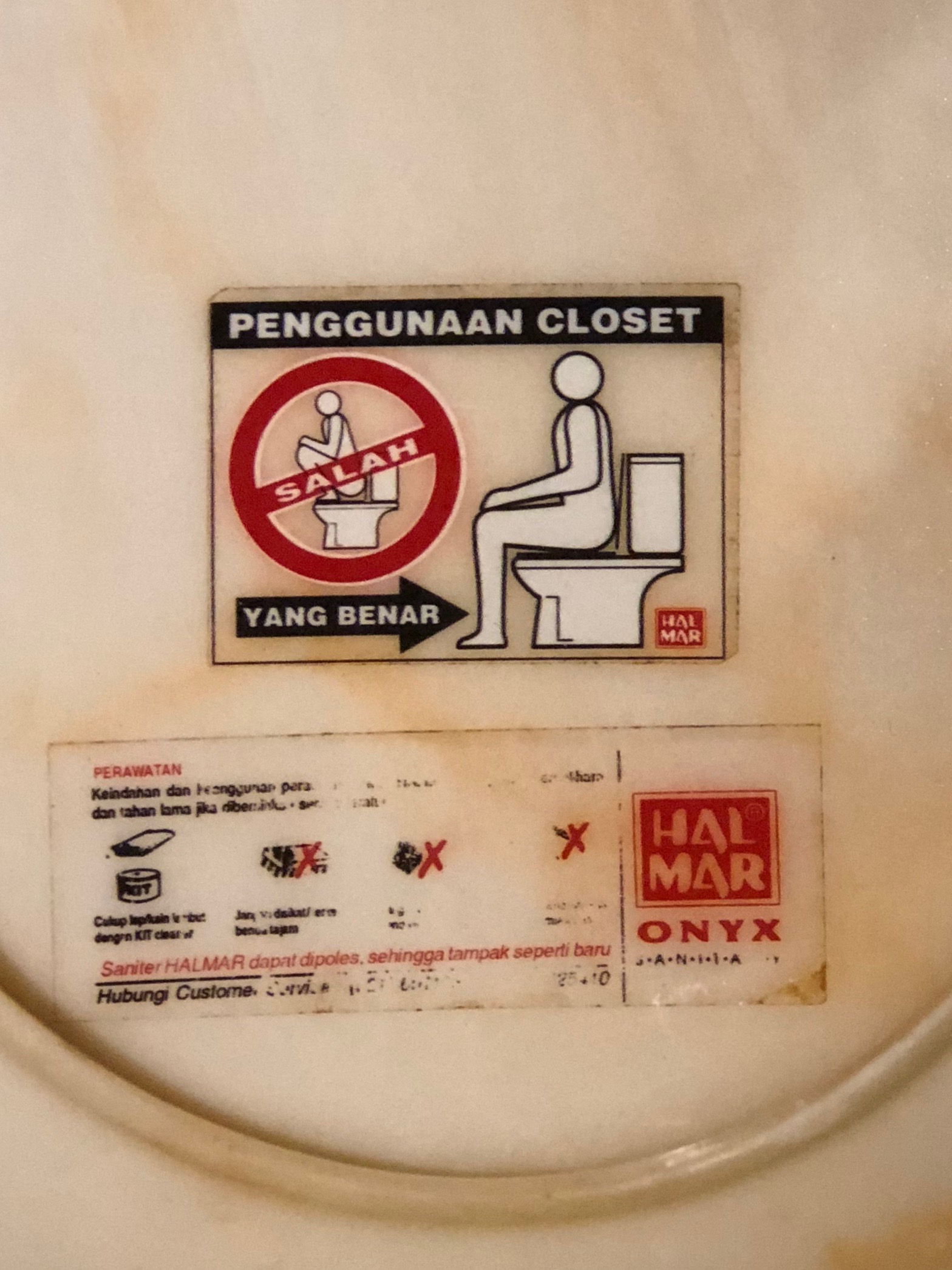In the post-Eat Pray Love world, Bali has lost a bit of its charm. Ubud has become a more congested tourism hotspot, but parts of the island remain a paradise on Earth.
Bali then: Malcolm and Wally at Tirta Gangga’s lotus fountain in 2001
Bali now: The royal water garden has been renovated and is much more crowded
We had been planning the trip to Bali for half a year. And then, less than two weeks before we were set to leave, 9/11 rocked our world. The entire country was in a daze. Americans had been living in a bubble of isolation, of false protection, thinking that our global actions wouldn’t have severe repercussions. And the idea of an attack on our own turf was incomprehensible. But then the World Trade Center towers fell, and that bubble popped horrifically and unexpectedly that morning in September.
The United States, so often a place of optimism, had turned utterly depressing. I eagerly grasped at the chance to escape the overwhelming malaise. “I’m still going to Bali,” I told my travel companions.
“I reserve the right to back out, even up to the last minute,” my friend Christina told me. It probably didn’t help that she was unnecessarily taking malaria pills at the time, which can induce paranoia as a side effect.
“We were able to flee a country at a desperate time, and instead explore a vibrant culture on a tropical isle halfway around the world.
Bali shimmers in my memory as a paradise on Earth.”
When the day came, Christina and her then-husband Malcolm joined me at O’Hare in Chicago. The airport had only recently reopened, and everyone still seemed scared to fly. The corridors were empty. I felt fatalistic, numb. It was difficult to care what happened, but I was willing to take the risk.
I decided to bleach my hair before our trip to Bali back in 2001. Here Malcolm and I tried posing as Dewi Sri, the goddess of rice
And here I am, 17 years later, back on Bali, this time making a point to visit the gorgeous Tegalalang Rice Terrace
What ended up happening was that we were able to flee a country at a desperate time, and instead explore a vibrant culture on a tropical isle halfway around the world. It was just what the doctor ordered, and I recall that trip, back in 2001, as one of the best of my life. Bali shimmers in my memory as a paradise on Earth.
So I was eager to share the magic of Bali with my husband, Duke. We had visited other parts of Southeast Asia, our favorite region on the planet, and I decided it was time I returned to Bali.
Here are some ruminations on my experiences on this one-of-a-kind Indonesian island 17 years ago and how it differed on our recent trip.
Bali then: We passed by the Saraswati Temple every time we left our hotel
Bali now: One thing hasn’t changed — the Saraswati Temple is still the centerpiece of Ubud
For one thing, the city of Ubud has grown exponentially. When I was here before, I remember it being a sleepy little town, with one main drag. We would wander into town in the morning, find a driver parked along the side of the road, negotiate a day rate and hop in. We would say, “Take us to a cool Hindu temple and an art village.” I don’t recall us ever having a set itinerary; we put ourselves entirely in our driver’s hands.
We did take some farther-afield trips, tourist attractions two hours or so away. Of course back then it might not have taken so long because the traffic wasn’t nearly as bad as it is now.
Traffic has gotten a lot worse on Bali, from motorbikes to construction vehicles
Speaking of traffic, there are certain stretches of the small winding two-lane roads where traffic becomes impassable. A lot of it has to do with the construction vehicles that are all over the place now as the city and the island itself gets built up more and more.
Last time, we stayed at cheap villas with hand-carved teak details for about $15 a night. This time, we went for a luxury resort
Beggars now plead for money in parts of Ubud. We didn’t see any homeless in the streets in Ubud on our trip 17 years ago. But there were plenty of signs of poverty in the small city of Kuta, which is popular with Aussie surfers. (This was part of reason I had zero desire to go back to Kuta on this trip. If you’re going to visit a tropical paradise, why surround yourself with the filth of a city?)
You don’t see a lot of people begging for money in Ubud, but we did see about 10 the five or so days we were there. In fact, one homeless woman was holding up her young daughter as she squatted over an open sewer grate to take a dump.
When we visited temples in 2001, there weren’t many other tourists, and locals would dress us in sarongs, sashes around our waists and headdresses
A lot of the handicraft items were no longer anywhere to be found. When I was here before, there were certain items that lined stalls in every market you visited but had, for some reason, vanished: shadow puppets, wooden frog instruments, blow dart guns, hand-carved chess sets, colorful kites in the shape of ships and the wavy ceremonial daggers called kris.
The only time I saw Western toilets on Bali in 2001 was at hotels (usually series of bare-bones but dirt-cheap villas). This sticker showing people how to use them — don’t squat right on the seat! — never failed to amuse me
Last time I was here, you literally only found Western toilets at your lodging. In fact, they had stickers on them to tell people who are unfamiliar that you shouldn’t squat on top of the seat. This time there was only one bathroom I went into where there was traditional Balinese toilet, which is really ceramic hole in the ground with treads for your feet. You “flush” your waste by dipping a plastic pot or bucket into the garbage can filled with water.
A Balinese cockfight from the late 1950s
When I visited last time, Ubud felt more like a traditional village. One afternoon we wandered behind a temple and stumbled upon a cockfight. We had heard about this popular pastime and stopped to watch. A group of men waved bills, placing bets on their favored bird.
Each contestant held his prized cock and tied triangular razor blades to the back of its leg, just above the talons. Everyone gathered in a circle, the roosters were released, and they flew at each other in a puff of dust. In the blink of any eye, one of the poor birds had fallen to the ground and lay there, dead.
It struck us as extremely anticlimactic. I imagined the roosters circling each other like boxers or sumo wrestlers, making parries and retreats. But no. It was over in about a second.
A man told us that we the rooster would be eaten as an offering at the temple. He said this almost apologetically, I imagined, to justify this violent pastime — though I probably imposed that sense of guilt upon him. To him, it was just a way of life. –Wally
“Everyone gathered in a circle, the roosters were released, and they flew at each other in a puff of dust.
In the blink of any eye, one of the poor birds had fallen to the ground and lay there, dead. ”


